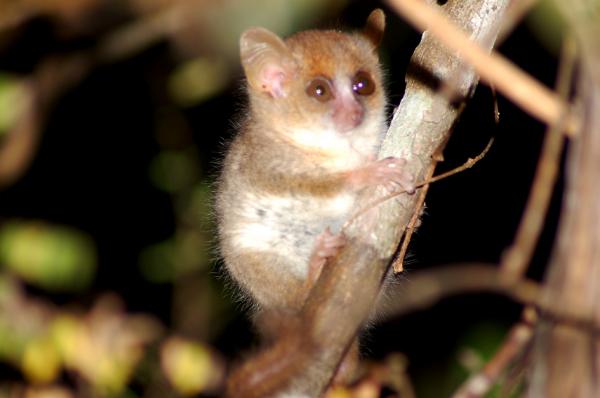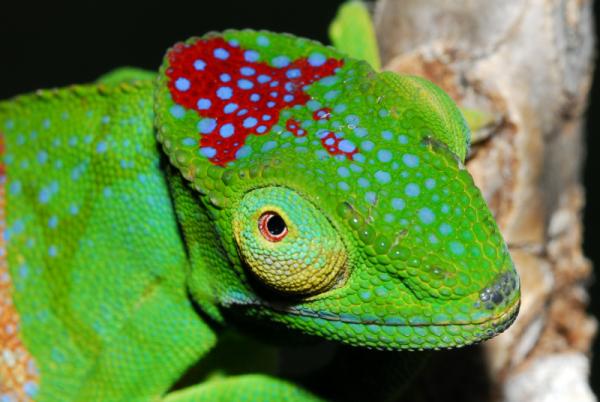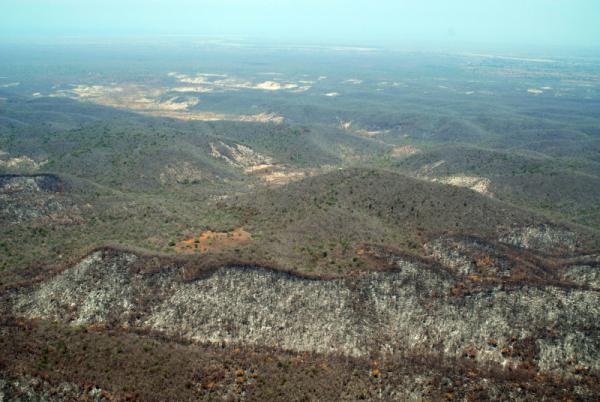
'Treasure Trove' of Madagascar Species Found

Madagascar, the fourth-largest island in the world, has proved to be a taxonomist's dream in recent years. Since 1999, on a nearly weekly basis, scientists have uncovered a parade of 615 new species from the colorful and cuddly to the downright bizarre.
The world's smallest primate, Berthe's mouse lemur, a creature teeny enough to perch inside a shot glass at 3.5 inches (9 centimeters) tall and weighing in at just an ounce (30 grams), and a lizard that wears a tree-bark disguise are among the standouts of the hundreds of species to debut, all compiled in a new report from the conservation organization WWF. [See some of the amazing species discovered .]
And although some new species are more charismatic than others (a yam isn't quite as photogenic as a lemur ), Nanie Ratsifandrihamanana, WWF Madagascar's conservation director, said it's hard to pick a favorite.
"All the species are so special, and many are unique to Madagascar," Ratsifandrihamanana told OurAmazingPlanet. "They don't exist anywhere else in the world."

Treasure trove of species
The island's treasure trove of unique species stems from its relative isolation. Madagascar has been separated from Africa and the Indian subcontinent for the last 80 million to 100 million years, allowing its plant and animal residents to evolve into fantastical forms. About 70 percent of its species are unseen anywhere else on the planet.
In total over the last 12 years, researchers have identified 17 fish, 41 mammals, 61 reptiles, 69 amphibians, 42 invertebrates and 385 plants new to science since 1999. And the pace of discovery shows no signs of slowing.
Sign up for the Live Science daily newsletter now
Get the world’s most fascinating discoveries delivered straight to your inbox.
In fact, due to growing scientific interest in Madagascar's denizens, and thanks to technological advances that allow for faster identification, such as DNA coding, Ratsifandrihamanana said the onslaught of new species described could continue or even increase.
But the news isn't all good.
"The sad part is that there could be many species that will disappear before they are discovered," she said.
Many of the creatures discovered are already endangered and are losing habitat quickly.

Disappearing forests
Madagascar's forests, home to many of its unique species, were cleared at a rate of about 2 percent a year from 1950 to 1990. According to WWF, the island has lost 90 percent of its original forest cover.
That's because humans depend on the island's forests, too. About 80 percent of the Malagasy population uses wood as its main source of energy.
In addition, large swaths of forest are cleared for subsistence farming.
Although Ratsifandrihamanana said the rate of deforestation was cut in half from 1990 to 2005, the last year for which figures are available, she said it remains a serious problem.
"We're really trying to empower local communities so they are better managers of the resources , because they are the ones who make the daily decisions for how they will use the forest," Ratsifandrihamanana said, adding that one major piece of the puzzle is improving the population's economic situation.
The country is one of the poorest on the planet, and a 2009 coup further complicated the nation's already bleak financial situation. Since the political upheaval, international funding for the country's environmental program was cut off, and there's been an increase in trafficking in exotic animals and prized, rare trees.
However, despite its troubles, Ratsifandrihamanana said WWF and other international organizations continue conservation efforts on a local level in Madagascar.
"It's an extraordinary place," Ratsifandrihamanana said. "We need a lot of support now for the environment."
Reach Andrea Mustain at amustain@techmedianetwork.com. Follow her on Twitter @AndreaMustain.









